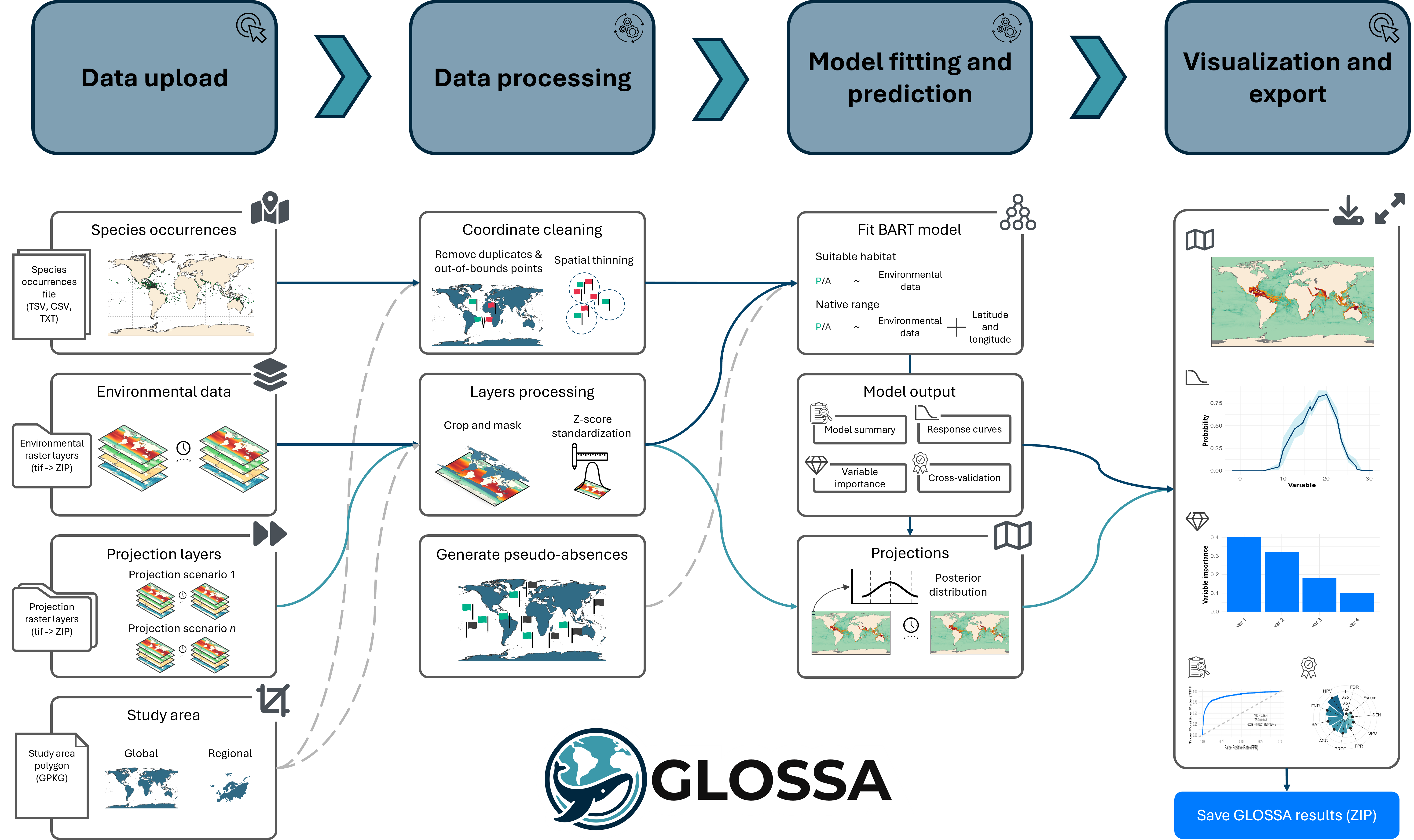What is GLOSSA?
GLOSSA is a simple, interactive R Shiny app designed to help you model species distributions without needing to code. Using Bayesian Additive Regression Trees (BART), GLOSSA predicts species habitats based on presence and environmental data, allowing you to visualize both current and future distributions.

How GLOSSA works?
GLOSSA’s workflow is designed to be intuitive, with four main steps:
1. Data upload
- Species occurrence: Upload your species data with either presence/absence or presence-only records. GLOSSA can work with multiple species in one session, generating pseudo-absences when needed.
- Environmental data: Upload environmental rasters (e.g., from sources like Bio-ORACLE) matched to the occurrence points by location and time.
- Projections: Include layers representing future time periods or climate scenarios to generate predictions for each.
- Study area: Upload a polygon to define your study region, or let GLOSSA use the extent of your environmental data.
2. Data processing
- Coordinate cleaning: GLOSSA automatically removes duplicate records, filters out invalid points, and applies spatial thinning if needed.
- Layer processing: Environmental rasters are cropped, masked, and can be standardized.
- Generate pseudo-absences: For presence-only data, GLOSSA creates randomly distributed pseudo-absences across the study area.
3. Model fitting and prediction
- Fit BART model: GLOSSA fits a BART model, generating predictions for suitable habitats and native ranges, and computes an optimal threshold for presence/absence classification.
- Model output: The output includes metrics like AUC, ROC curve, confusion matrix, functional response curves, and variable importance.
- Projections: Projections can be made to different areas, time periods, and climate scenarios.
4. Visualization and export
After the analysis, GLOSSA provides interactive maps and charts to explore model results, allowing you to export data and visuals for further use.
Why use GLOSSA?
GLOSSA simplifies species distribution modeling by:
- Making modeling accessible with a no-code interface.
- Offering robust machine learning predictions with BART.
- Supporting independent multi-species and scenario-based analysis in a single run.
- Providing detailed visualizations and export options for further analysis or publication.
Ready to get started?
Learn how to install and set up GLOSSA: Installation guide.